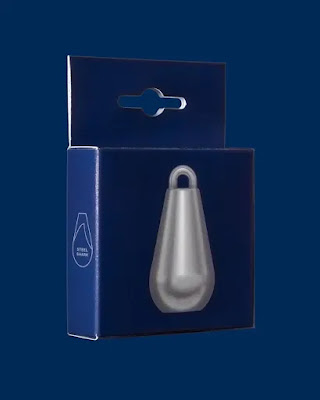The Complete Guide to Fishing Line Weight
Fishing Line Weight 101: Selecting the Right One for Your Tackle Box
Fishing line weights are measured in pounds and ounces, so when you’re putting together your tackle box, make sure to pick out a few different weights. The lighter the weight, the thinner and more sensitive it will be.
A fishing line is an essential piece of fishing equipment that is used to catch fish or other sea creatures. Usually, fishing lines are made from nylon or fluorocarbon. Fishing lines come in a variety of sizes which can generally be classified by their weight (along with their corresponding uses) and strength.
A 50-pound test fishing line is typically used for delicate situations where an angler needs a lightweight, low friction surface to catch and reel in fish. In the case of a fish's mouth, a 50-pound test fishing line would be more than enough due to its very lightweight and low friction surface.
Another use for a 50-pound test fishing line is for trolling for mackerel and other mid-sized fish.1/0 test fishing line is the most common type used in fishing, where it is typically used as the line of a leader to connect two hooks which are attached to each end of an artificial lure or fly.
A 1/0 test fishing line will not break because it has less stretch than other types of lines such as a 10-pound test fishing line and a 20-pound test fishing line and is typically more durable. 25-50-pound test fluorocarbon fishing line, on the other hand, is used for heavier situations where a stronger, yet flexible type of surface is needed to catch and reel in fish. In the case of a fish's mouth.The Best Gear for Salmon Fishing at a Glance
Salmon fishing is a popular sport in many parts of the world. This article will help you select the right gear for salmon fishing.
1) Rod
2) Reel
3) Harness
4) Tacklebox
5) Line
6) Lure
7) Wet suit
8) Fishing license
9) Hat
10) Waders
The Best Trolling Lure to Use When the Fish Aren't Bitein'
There are many different types of lures that can be used to catch fish. The characteristics of each lure are a result of their appearance, movement, sound and smell. It is important for a fisherman to gauge the size, type and location of the fish before choosing a lure.
Find out what works best for you! The most common types of lures are bobbers, spoons, plugs and jigs. Bobbers are used to suspend bait from a fishing line. They are also used with trolling motors as a means of detecting fish.
What is the Ideal Fishing Line Size?
The size of the fishing line you choose will determine what kind of fish you can catch. Here is a table that shows the recommended fishing line sizes for various fish types.
Fishing Line Size for Fish Type:
- Crappie 2-4
- Perch 5-8
- Longnose Gar 2.5-4.0
- Bass 6-12
- Walleye 1/0 -6/0
- Muskie 1/0-6/0
- Salmon 6-12
- Rainbow Trout 0-3
- Brown Trout 0-3










.png)














0 Comments